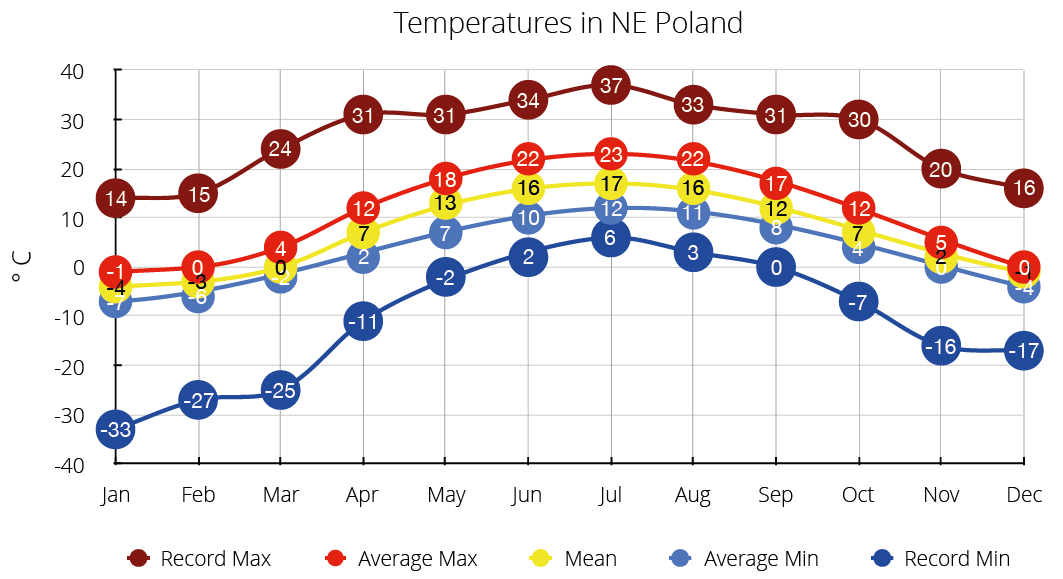Weather in Poland
To be prepared is half the victory
Historical data
We are pretty sure you have your own favourite weather websites but since the historical or typical values can be difficult to find, especially for North-eastern Poland, we created the charts below using data from several different sources.
North-eastern Poland is under a strong influence from the continental, boreal climate which is dry and cloudy. The average annual rainfall for Poland is as little as 600 mm.
In practice, winters are usually cold and snowy. You can expect a good foot or more of snow in January and February. In spring, March and April can be quite chilly whereas May is usually much warmer – see the temperatures chart. Summer is hot and dry. All the rain that we get then is usually during a few large storms. In autumn, September and October are usually quite warm and the landscape is very picturesque with colourful trees. November, on the other hand, is usually cold and grey.




